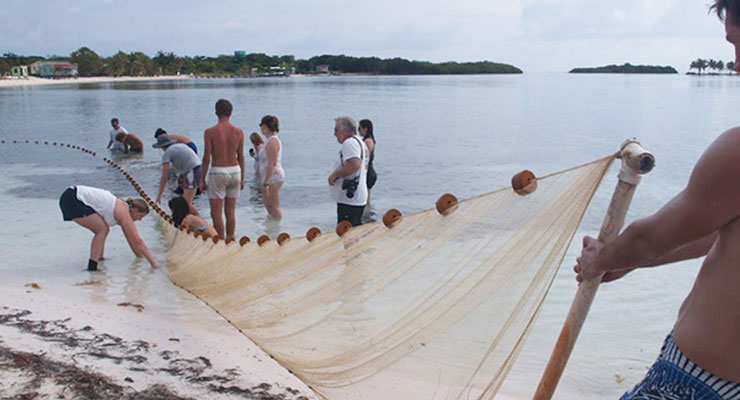
The St. Mary’s River Project is a state and federal funded program administered through St. Mary’s College of Maryland. We investigate matters related to the water quality and ecological health of the St. Mary’s River and the Chesapeake Bay. We also work to promote stewardship and awareness of important environmental concerns within the local community.
The project’s main focus has been ongoing water quality monitoring of the tidal and non-tidal portions of the St. Mary’s River and adjacent tributaries. Water quality monitoring is performed once a month using dataflow at ten sites in the tidal river and continuous monitoring is carried out at three stations in the tidal rivers every 2 weeks. Lastly, non-tidal sampling is performed quarterly at fourteen sites.
Educations
The St Mary’s River Project provides college students the opportunity to gain hands-on experience in the field, classroom and laboratory. Interest in the project has led to the recruitment of many St. Mary’s students. Students have been hired as salaried employees during the summer months; during the school year, students may work on the project for credit or on a voluntary basis. The project has been highly successful, largely due to the continued interest and enthusiastic participation of our students.
Goals
The Four Objectives of the St. Mary’s River Project:
- To establish and maintain a water quality monitoring program for the entire St. Mary’s River watershed
- To support research on environmental and ecological questions related to the St. Mary’s River system
- To increase public awareness and stewardship of the ecological health of the river within the community
- To make the information generated by the project useful for decision making at the local, state and regional levels
Monitoring
We began monitoring the water quality of the St. Mary’s River in June 1999 to establish baseline water quality conditions. Non-tidal water sampling occurred from 2004-2007.
All data has been uploaded to the Chesapeake Bay Program to allow for data comparisons with the entire Chesapeake Bay system.
Currently, SMRP is contracted by MD-DNR to perform tidal monitoring throughout the St. Mary’s River. Tidal monitoring involves continuous monitoring (con mon) and Dataflow® monitoring. SMRP has 3 con mon stations in Piney Point, St. George’s Creek, and Breton Bay and occurs every two weeks. Dataflow® monitoring occurs twice a month throughout the St. Mary’s River and lower Potomac tributaries: Wicomico River, St. Clement’s Bay, and Breton Bay.
Continuous monitoring involves collecting water measurements from water quality instruments (sondes) that are placed in pvc pipe for up to 2 weeks in the field. The sondes record water temperature, turbidity, chlorophyll a, salinity, dissolved oxygen, and pH. Con mon stations are also used to calibrate Dataflow® stations.
Dataflow® occurs twice a month aboard SMRPs research boat. Water is pumped (by bait pump) from 0.5 m below the surface into a sonde while the boat is cruising at ~ 22 knots. Water parameters (listed above) are recorded every 4 seconds. In addition, GPS readings are incorporated allowing for high speed spatial mapping.
All data is quality assured and quality controlled, checked and sent to MD-DNR where it is posted on:
Eyes on the Bay.
History
The St. Mary’s River Project (SMRP) officially began in June 1999 and was initially funded by the Environmental Protection Agency (EPA-III) for a period of one year (June 1999 to May 2000). Funding for the second, third, and fourth years (June 2000 to present) has come from the department of Housing and Urban Development (HUD). Currently, our funding (2005-2007) comes from the Maryland Department of Natural Resources (MDNR). We also have a strong working relationship with the Chesapeake Biological Laboratory in Solomons Island, MD as they perform the same water quality monitoring for MDNR and help SMRP as well.
Personnel
Project Co-Directors: Robert Paul & Chris Tanner
